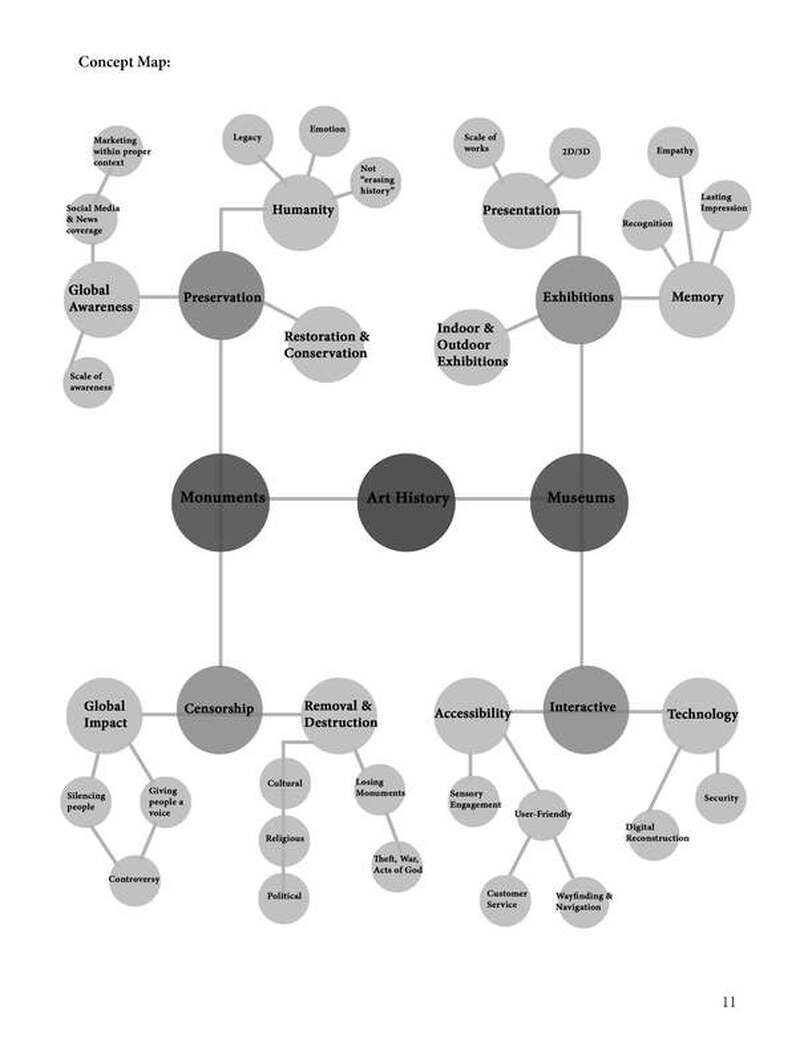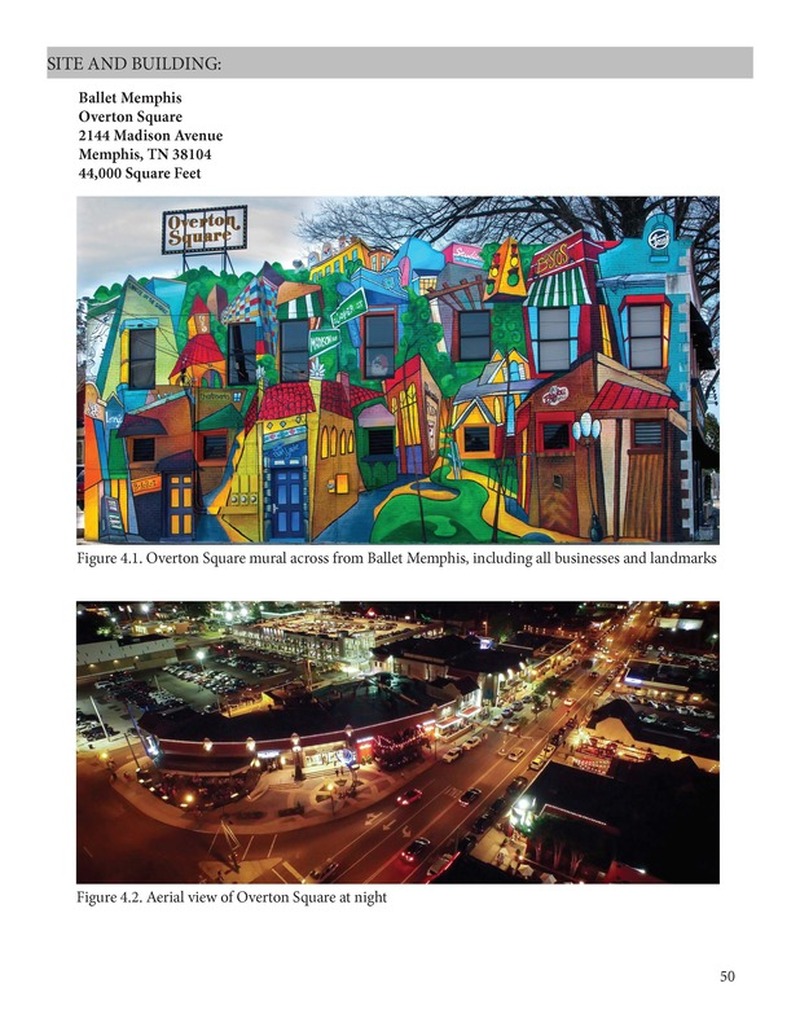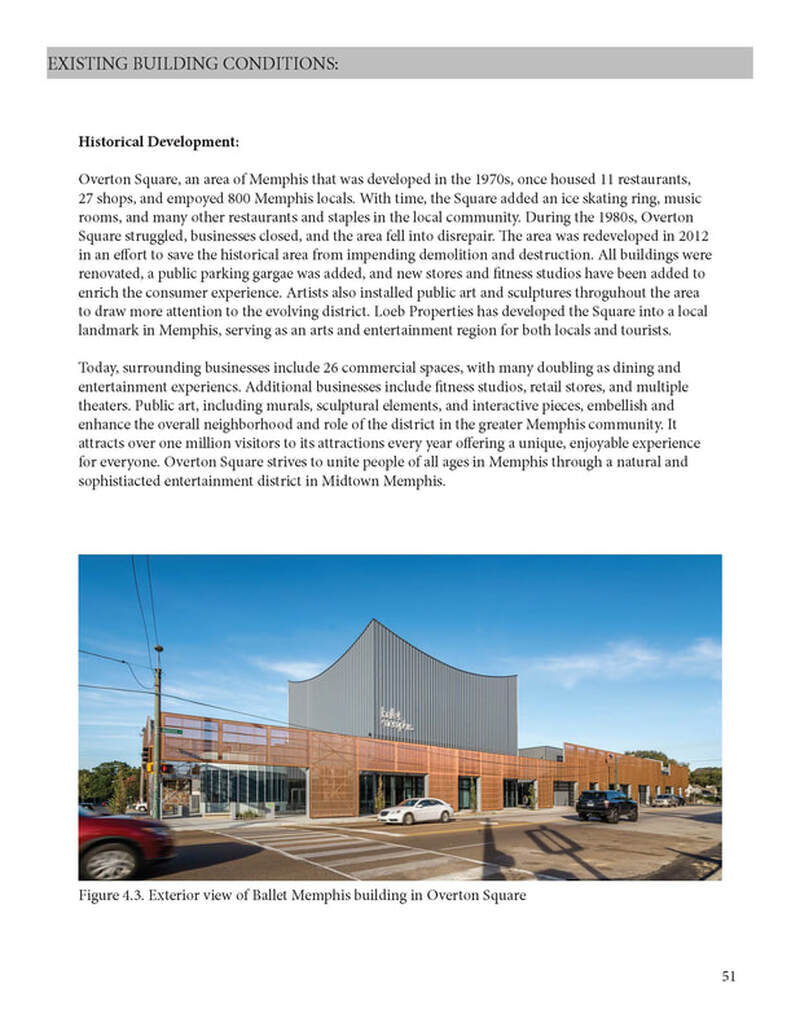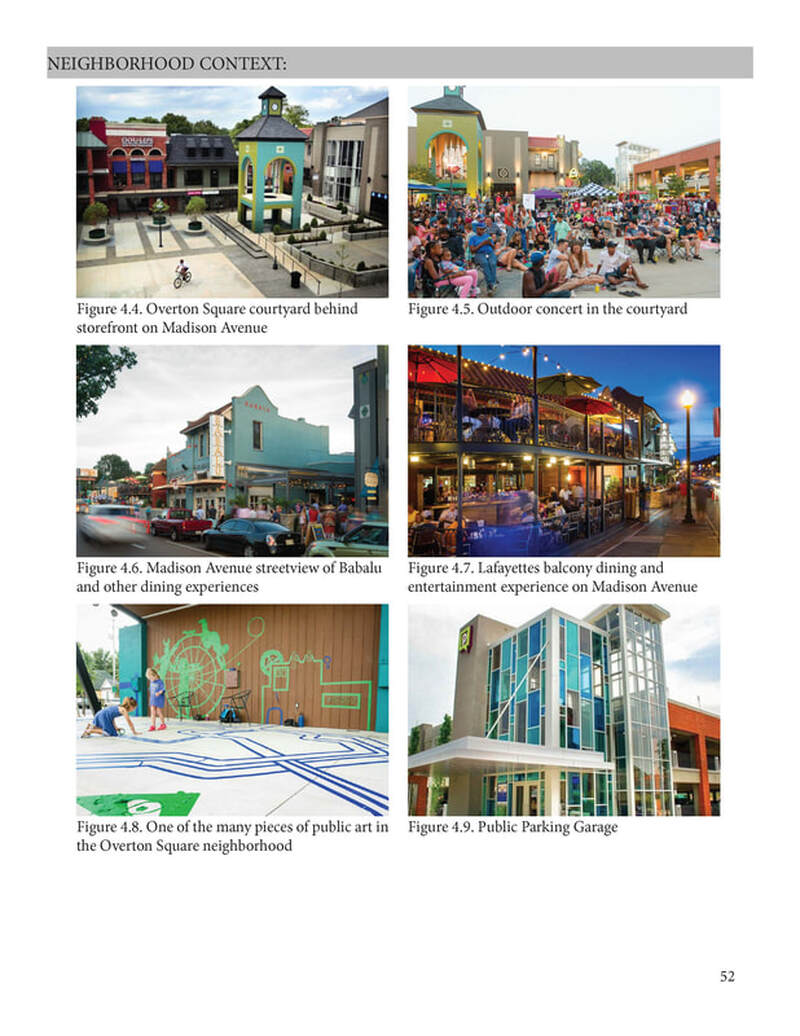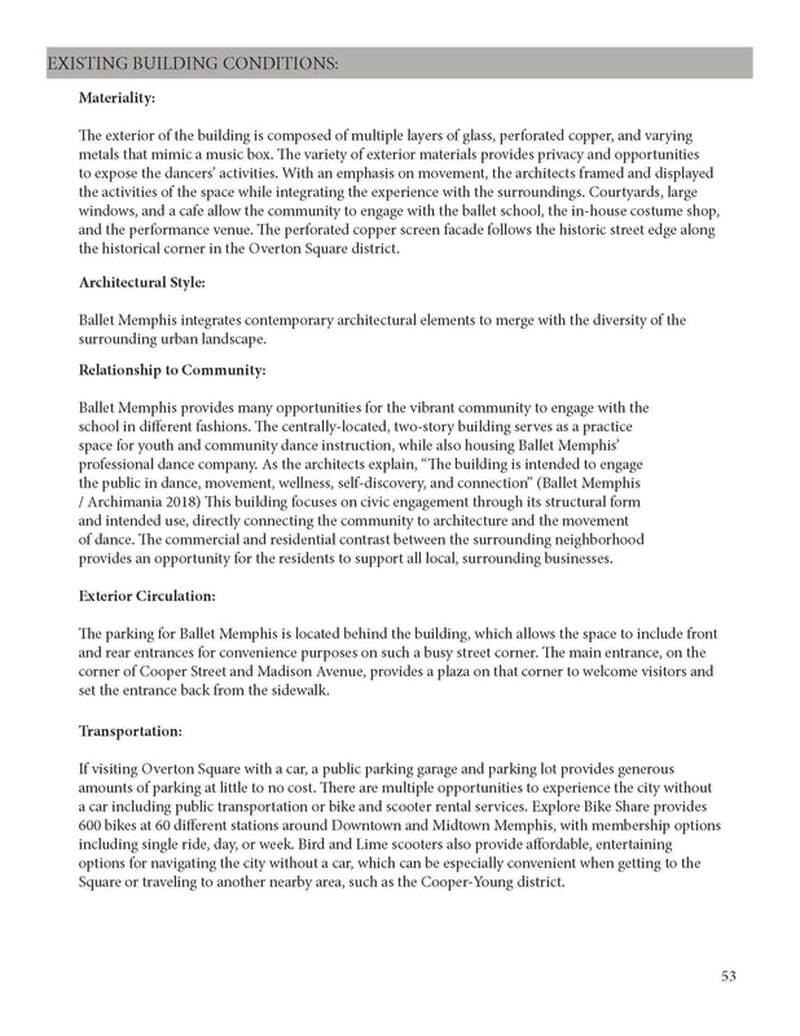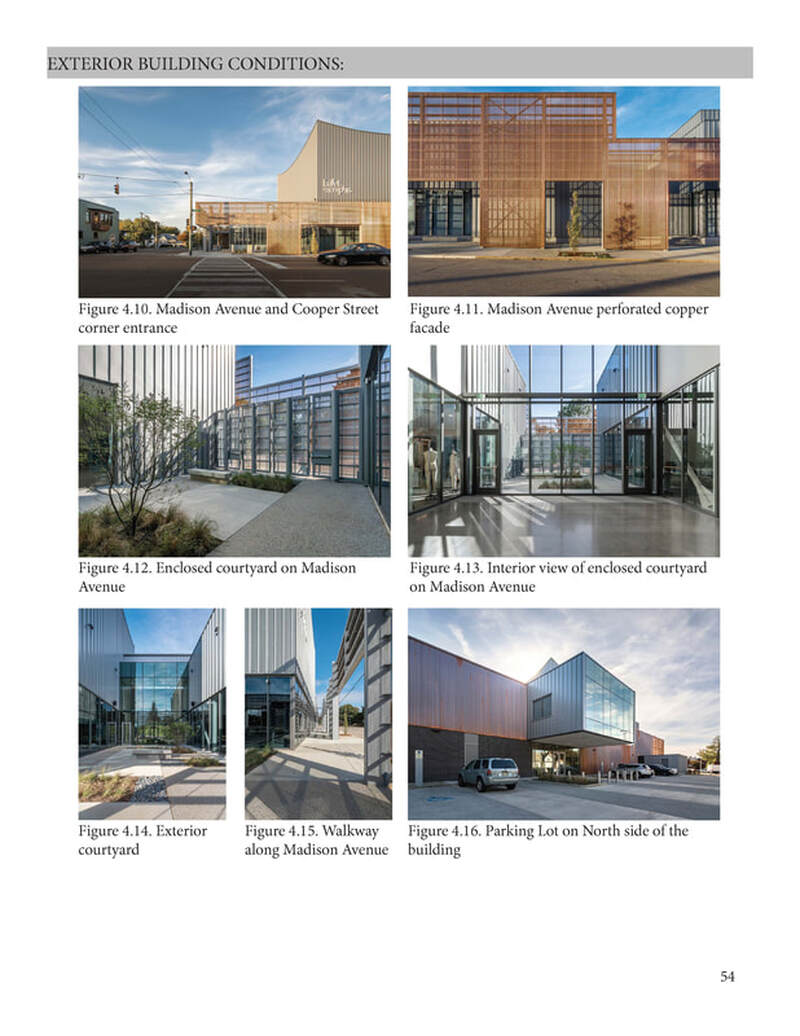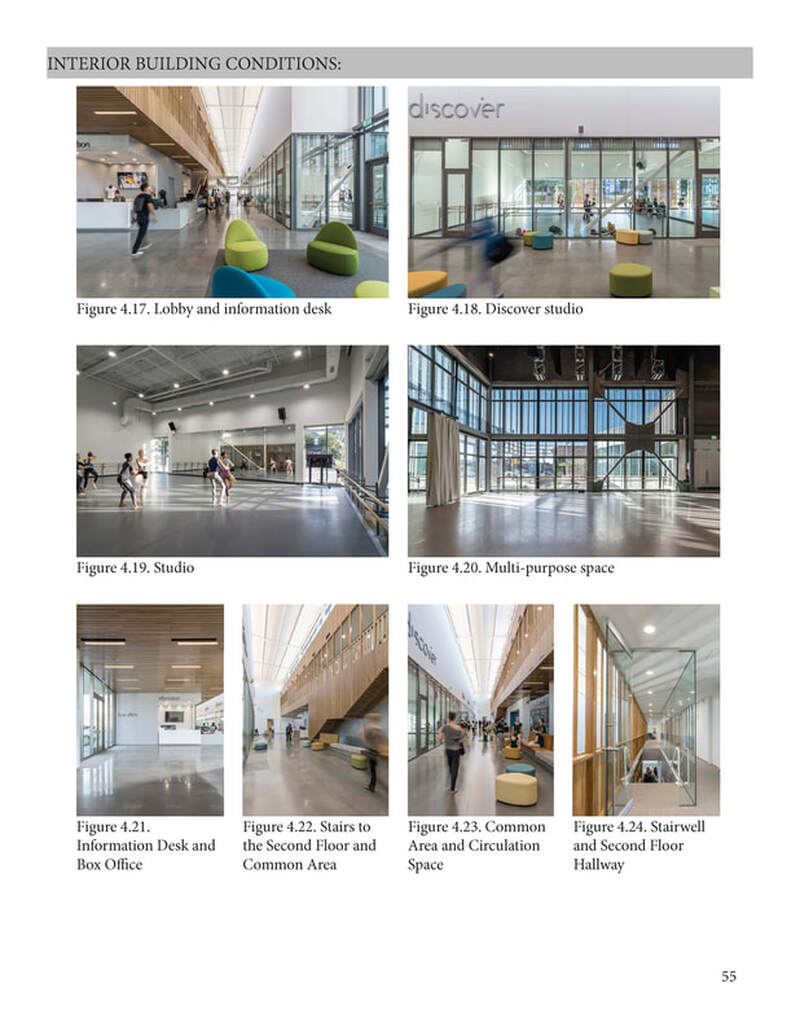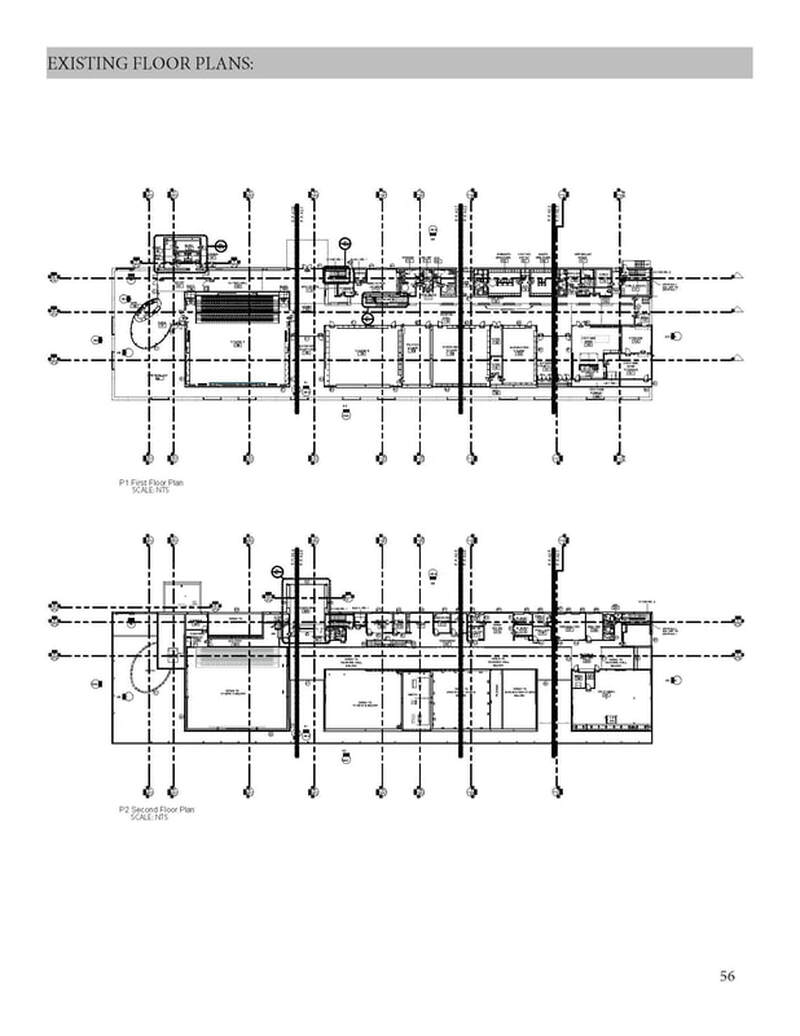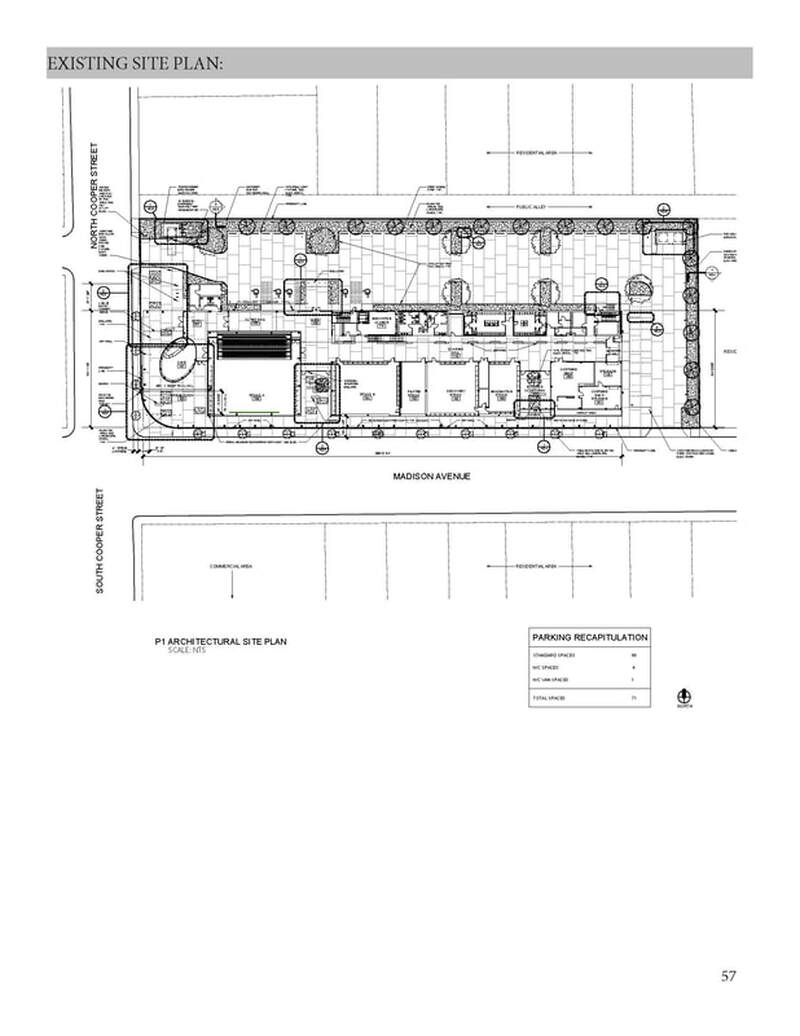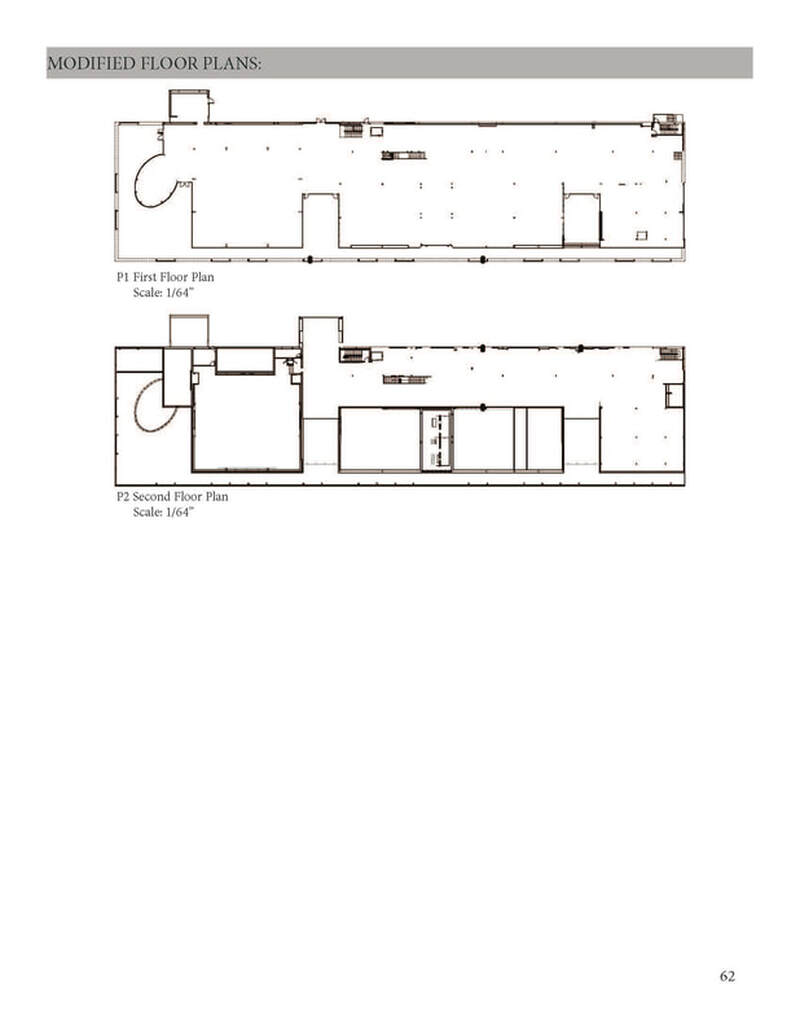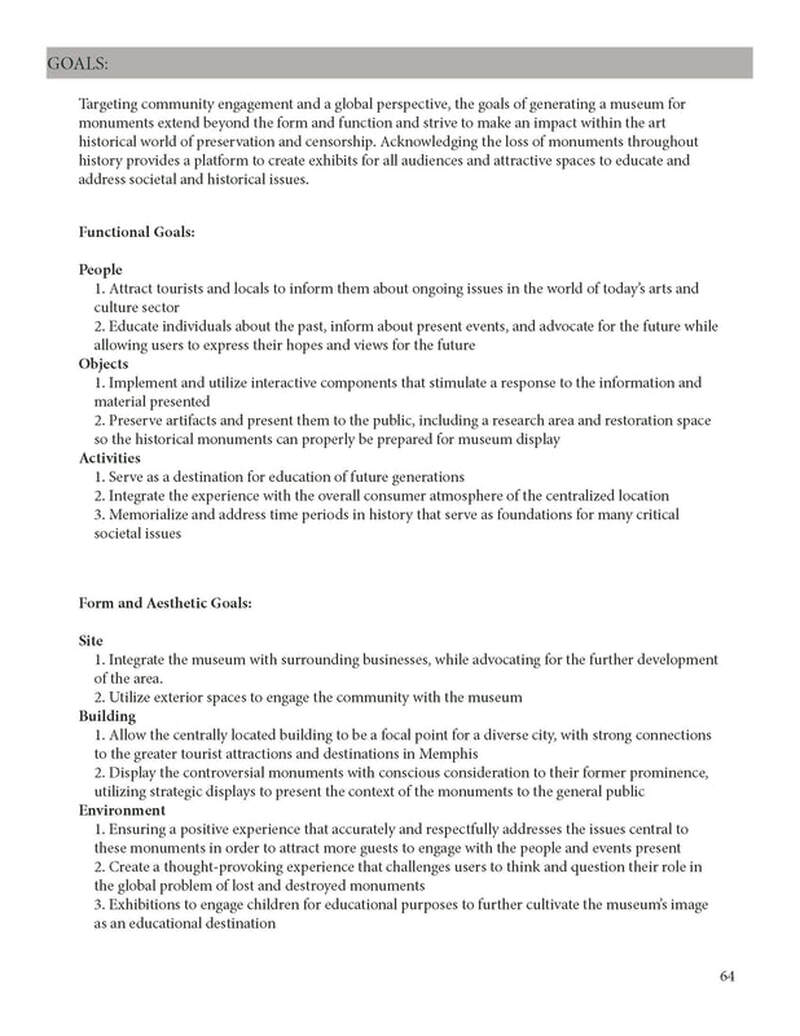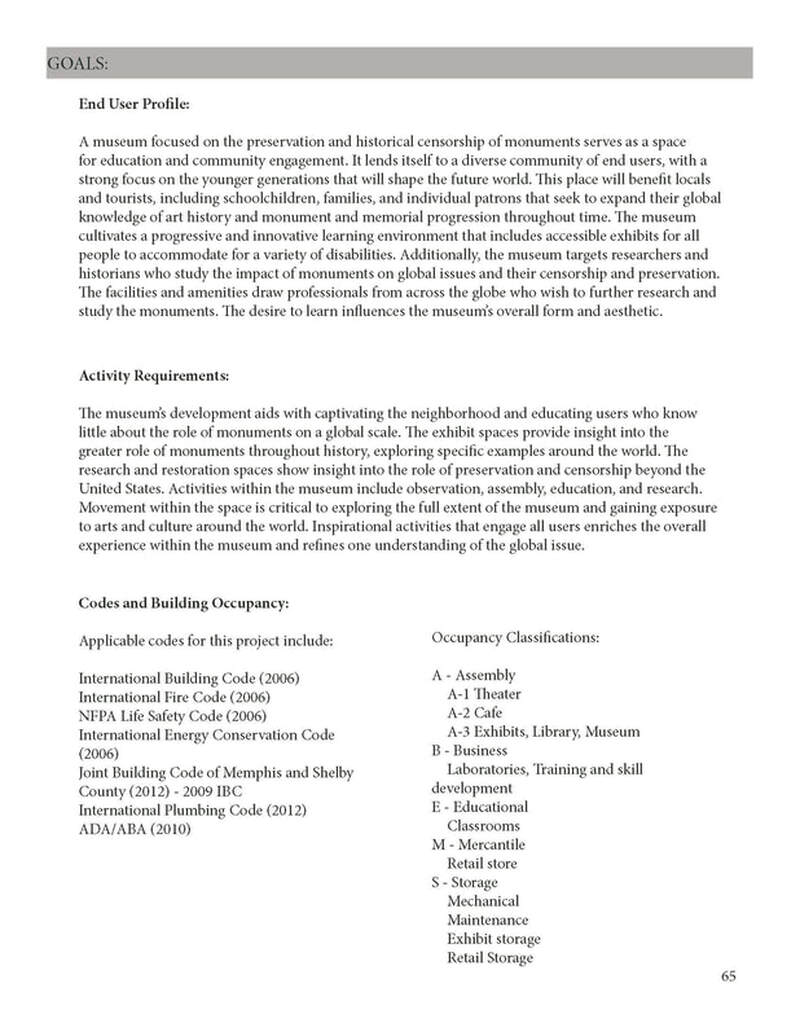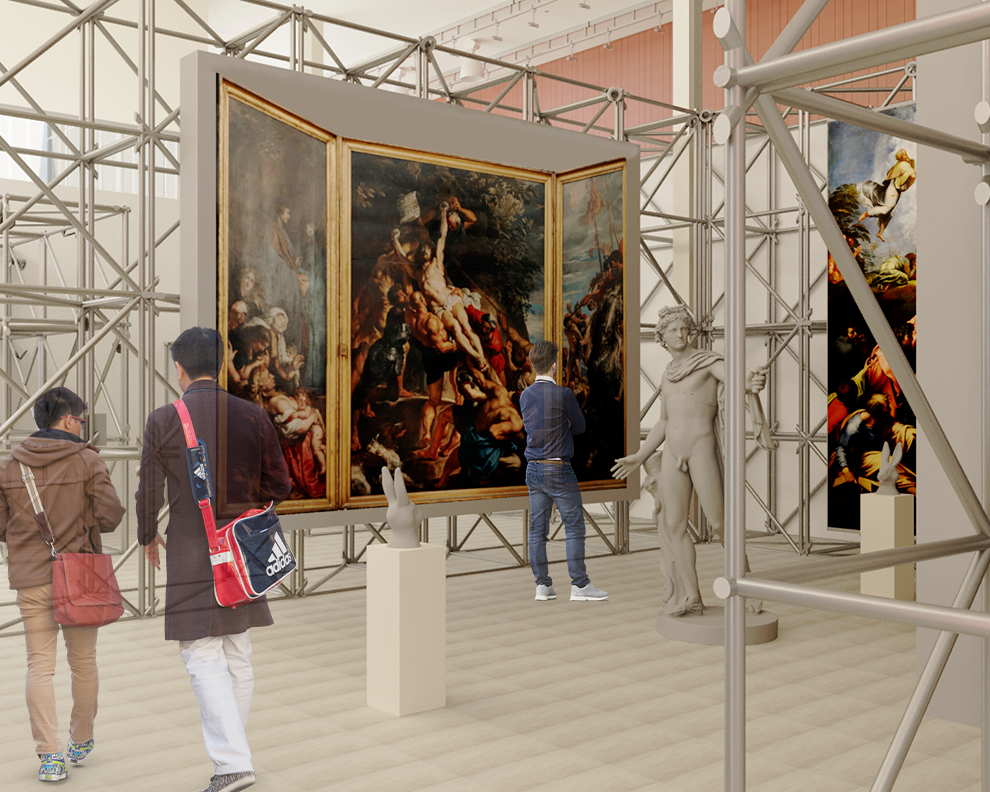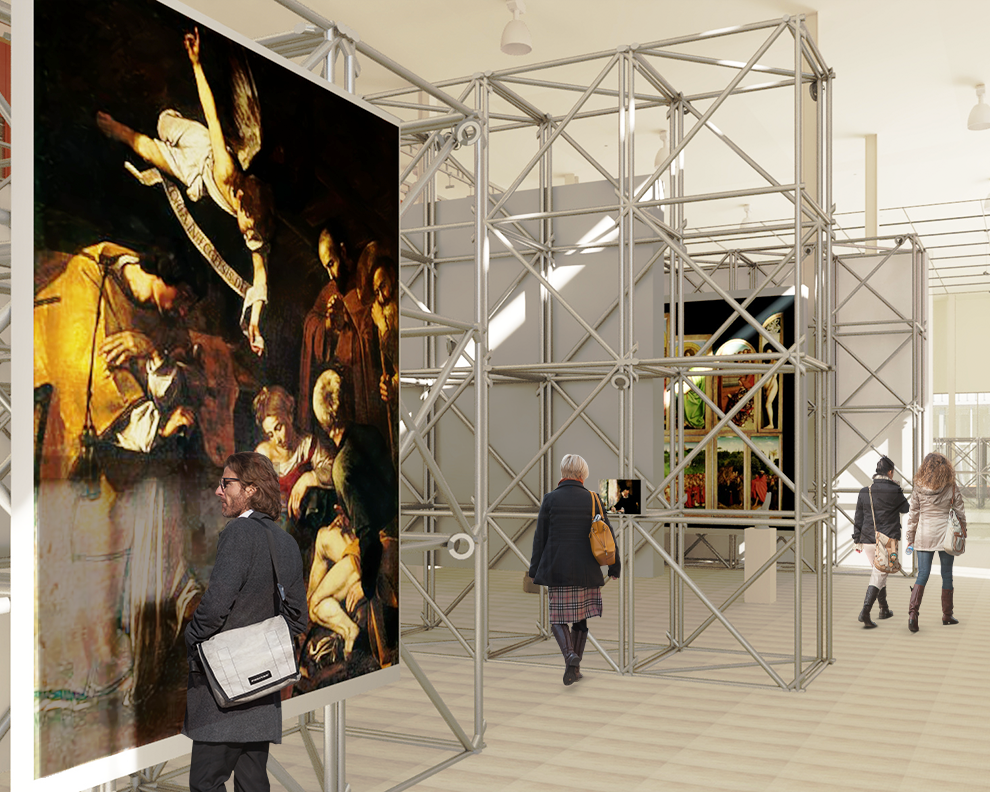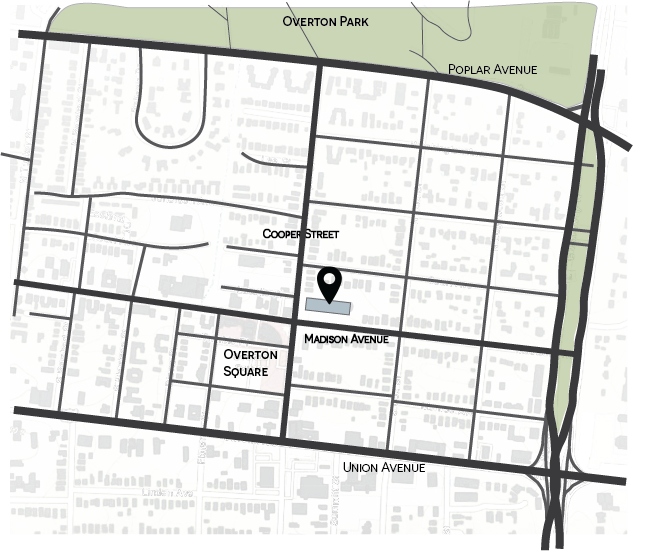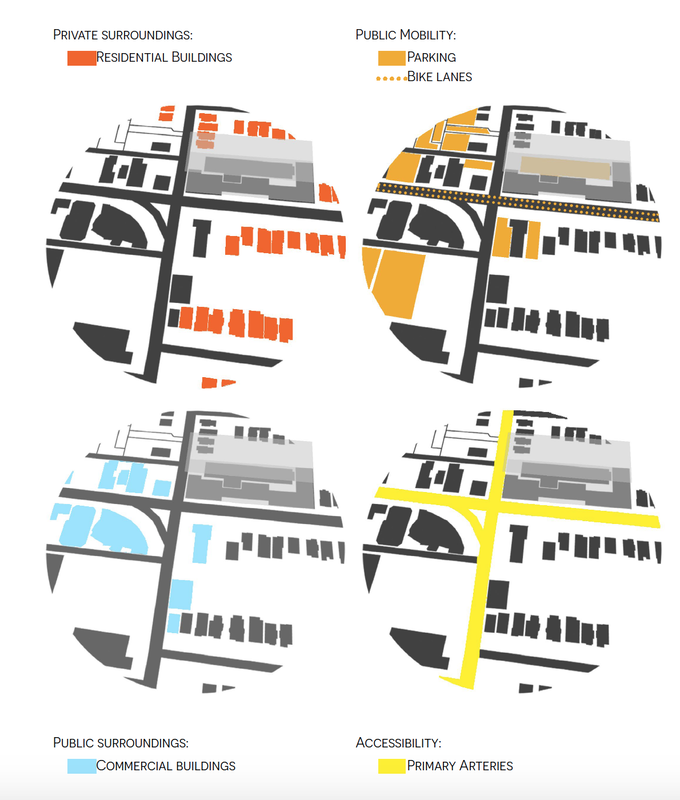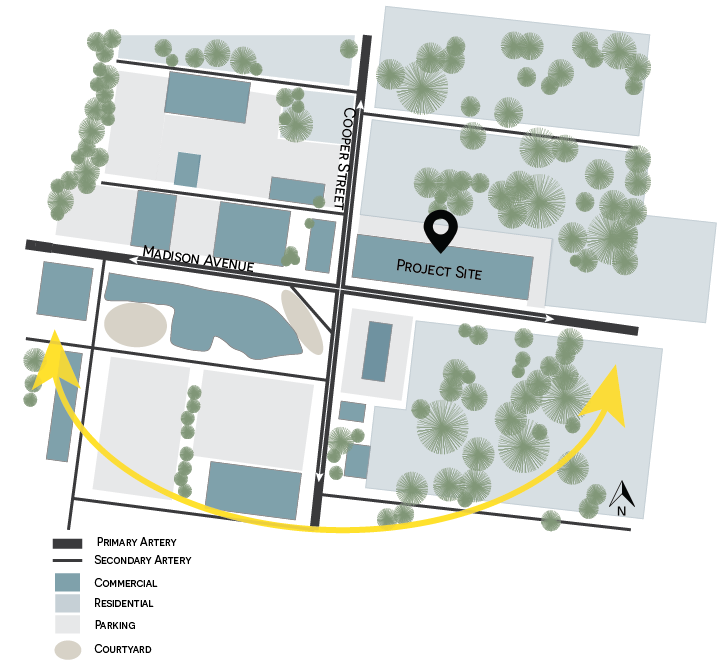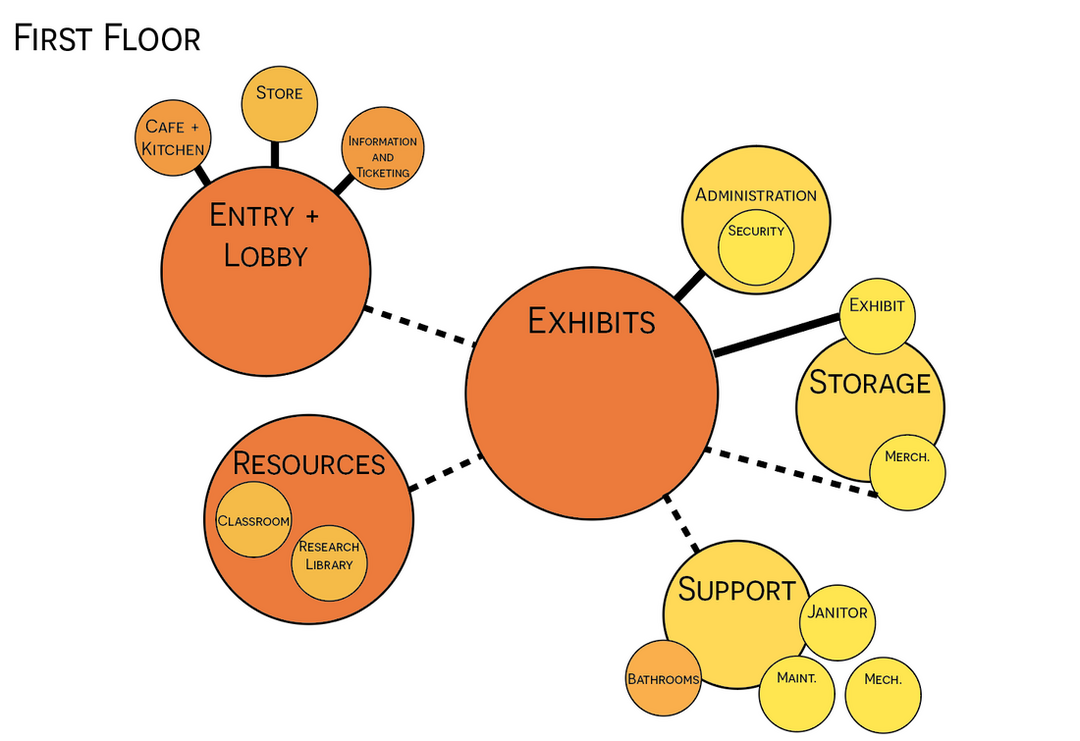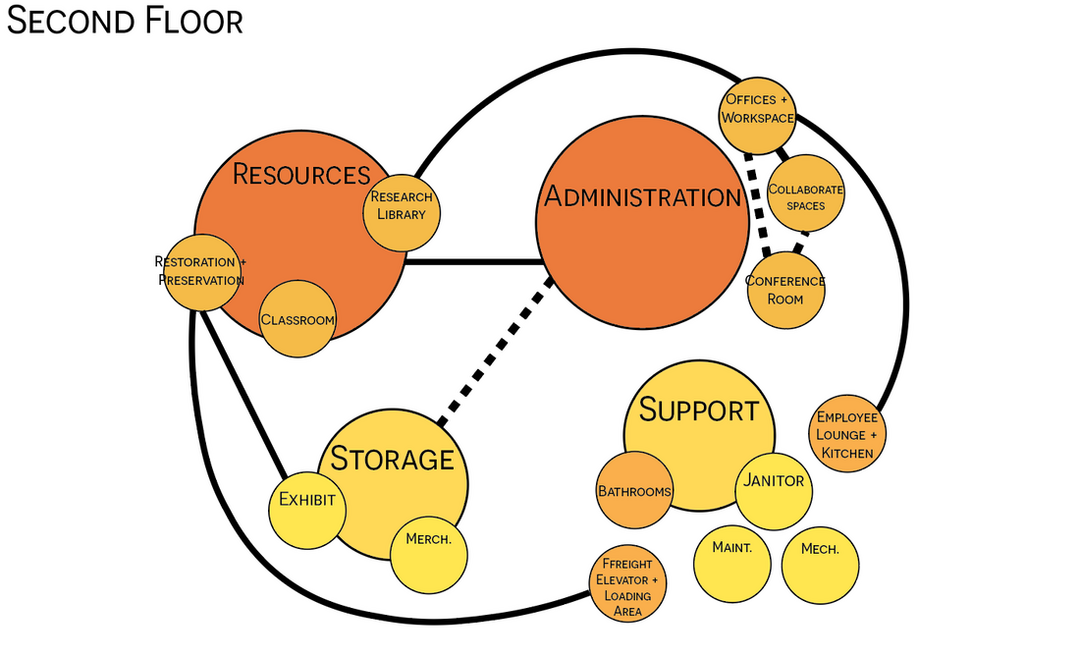CAPSTONE
THE MUSEUM OF LOST ART AND MONUMENTS
Monuments and statues erected throughout history stand as symbols of power. Their significant impact lies in the message they portray to the public, for their presence conveys the principles and values of the individual and a specific moment in time.
Research began with this question: How can art preservation and restoration affect the role of monuments after their removal, considering the role that this action plays in global censorship?
Ultimately, monuments face being erased from history through their removal, censorship, and lack of preservation as historical works of art. A museum poses an educational opportunity to curate an excitement for knowledge and discovery. This museum presents information respectfully, in an educational manner, while using other museums as precedent studies to understand the best way to display the monuments and contextualize them. The museum incorporates interior and exterior spaces to tie the monuments to their former space in the urban landscape.
Monuments throughout history have been lost in various ways including theft, war, iconoclasm and vandalism, acts of God, temporal works, destruction of owner, and burial and exhumation. The museum will focus exhibits on the types of loss monuments have experienced while educating individuals about the past, informing about present events, and advocating for the future. The museum's program calls for a Restoration and Preservation Studio and a Research Library in order to preserve artifacts and address historical periods that serve as the foundation for many societal issues we face today. The final museum for lost monuments will bridge an educational gap, while focusing on a creating a global and personal impact for each visitor.
Research began with this question: How can art preservation and restoration affect the role of monuments after their removal, considering the role that this action plays in global censorship?
Ultimately, monuments face being erased from history through their removal, censorship, and lack of preservation as historical works of art. A museum poses an educational opportunity to curate an excitement for knowledge and discovery. This museum presents information respectfully, in an educational manner, while using other museums as precedent studies to understand the best way to display the monuments and contextualize them. The museum incorporates interior and exterior spaces to tie the monuments to their former space in the urban landscape.
Monuments throughout history have been lost in various ways including theft, war, iconoclasm and vandalism, acts of God, temporal works, destruction of owner, and burial and exhumation. The museum will focus exhibits on the types of loss monuments have experienced while educating individuals about the past, informing about present events, and advocating for the future. The museum's program calls for a Restoration and Preservation Studio and a Research Library in order to preserve artifacts and address historical periods that serve as the foundation for many societal issues we face today. The final museum for lost monuments will bridge an educational gap, while focusing on a creating a global and personal impact for each visitor.
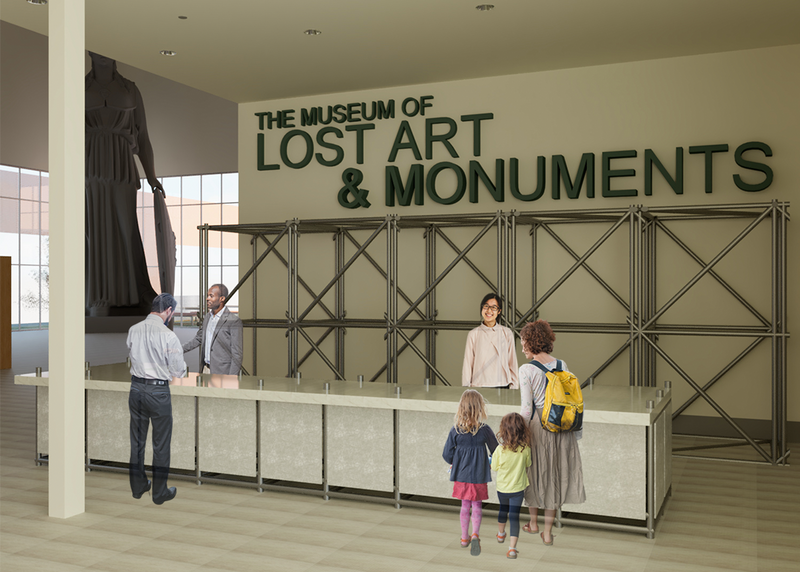
Information Desk | First Floor
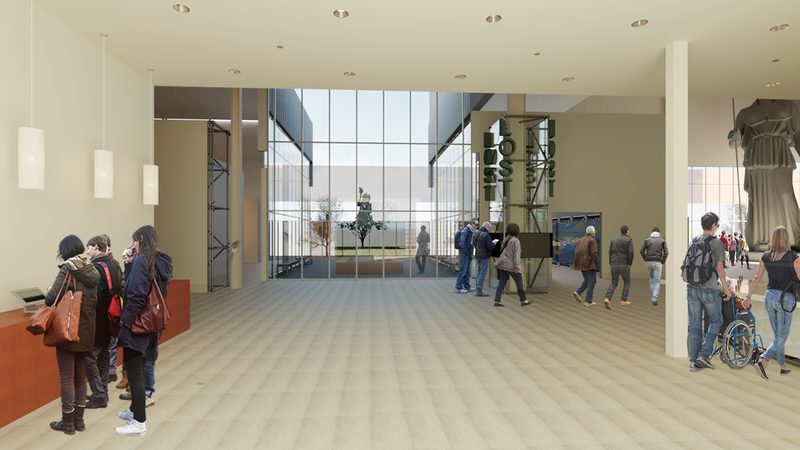
Primary Entrance | First Floor
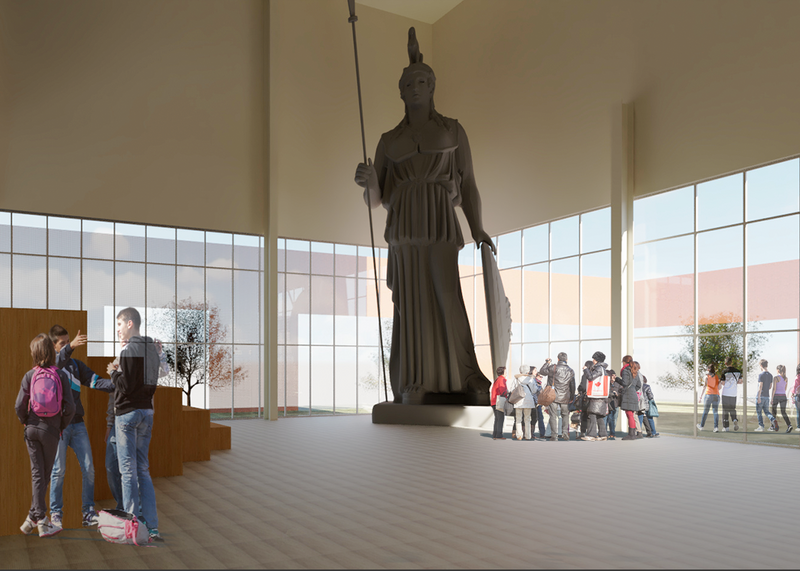
Athena Parthenos replica in Lobby | First Floor
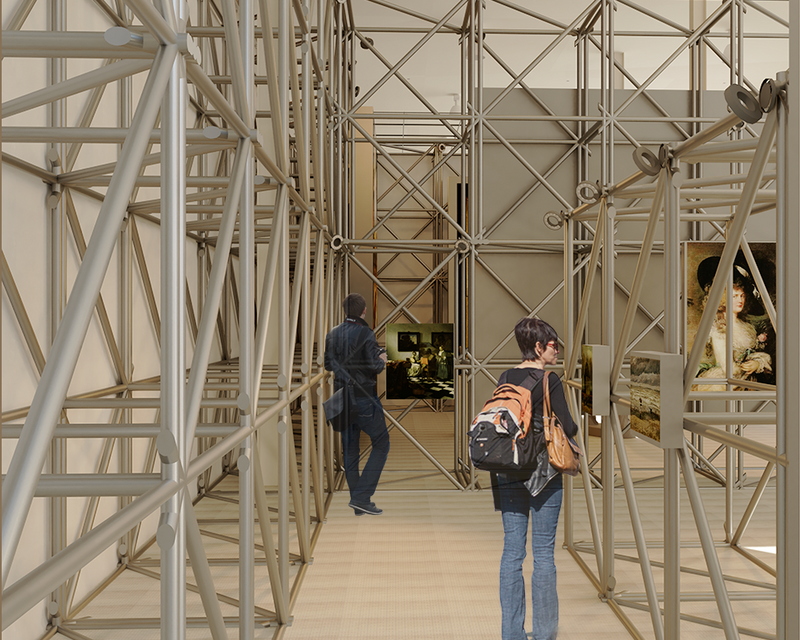
Scaffolding Exhibit detail
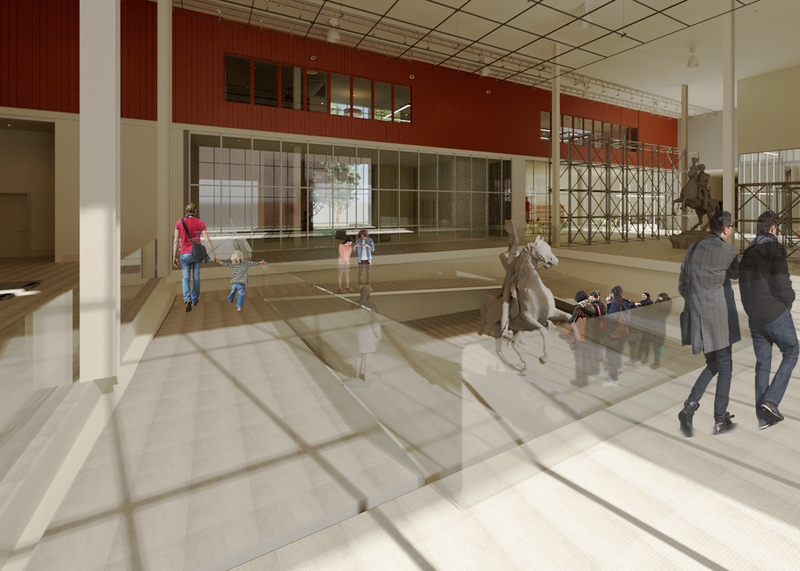
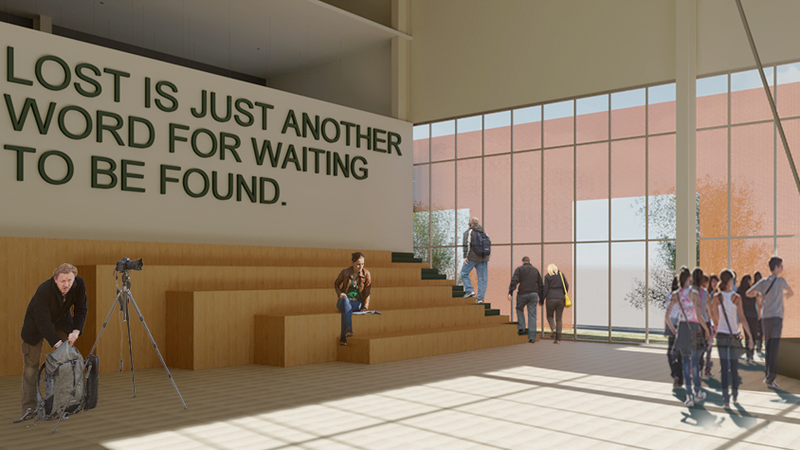
Lobby | First Floor
Lost art and monuments play a vital role in the world today, particularly the development of education through the arts utilizing outside resources. These pieces present a powerful message to the public through dominant symbolism and historic backgrounds. Examining the subject matter through the lens of preservation highlights the impact lost elements of culture have on the greater public and the education of future generations.
The power of the museum lies in the never-ending curation opportunities, from the past and the present, that would allow the museum to provide ever-changing exhibits that engage the community and provide a global platform. The museum has the power to exhibit more masterpieces than imaginable, expanding the potential of the museum beyond merely an art or history museum.
The power of the museum lies in the never-ending curation opportunities, from the past and the present, that would allow the museum to provide ever-changing exhibits that engage the community and provide a global platform. The museum has the power to exhibit more masterpieces than imaginable, expanding the potential of the museum beyond merely an art or history museum.
The Museum of Lost Art and Monuments curates an excitement for knowledge and discovery, with respectful exhibitions of the historic works and pieces. The museum features the preservation of artifacts through the resource spaces, including the Restoration and Preservation room and Research Libraries, while also serving as a place for storing works while exhibits are transitioning. The dynamic exhibits complement the curated spaces, as the use of scaffolding structures and temporary exhibits emphasize the temporary nature of certain cultural elements. The museum focuses on the impermanence of arts and monuments, with particular attention to how history has lost these works over the course of many centuries.
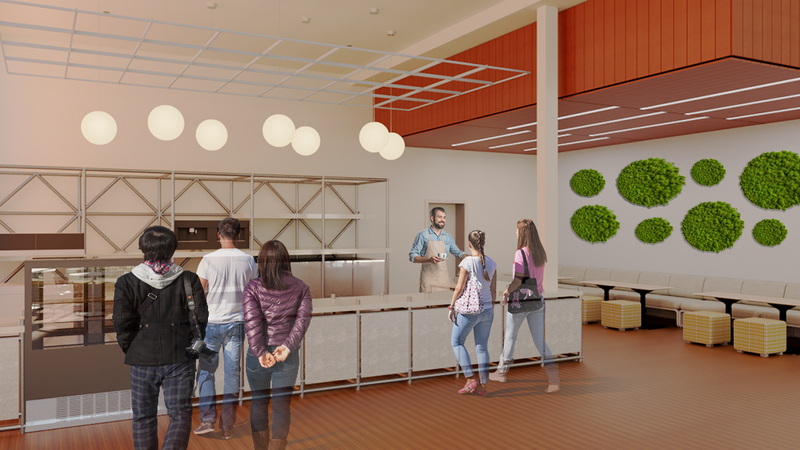
Museum Cafe | First Floor
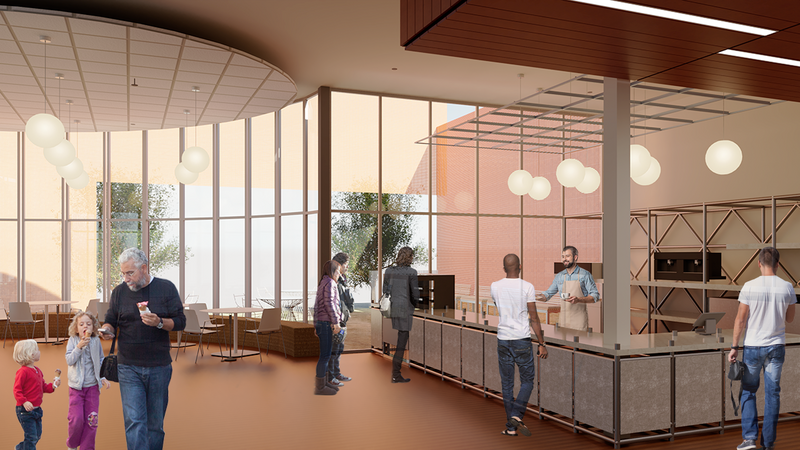
Museum Cafe | First Floor
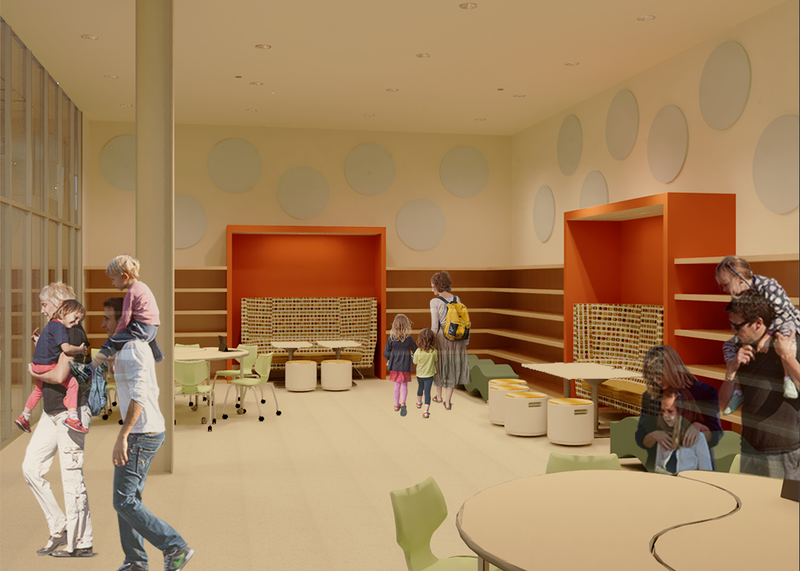
Children's Research Library | First Floor
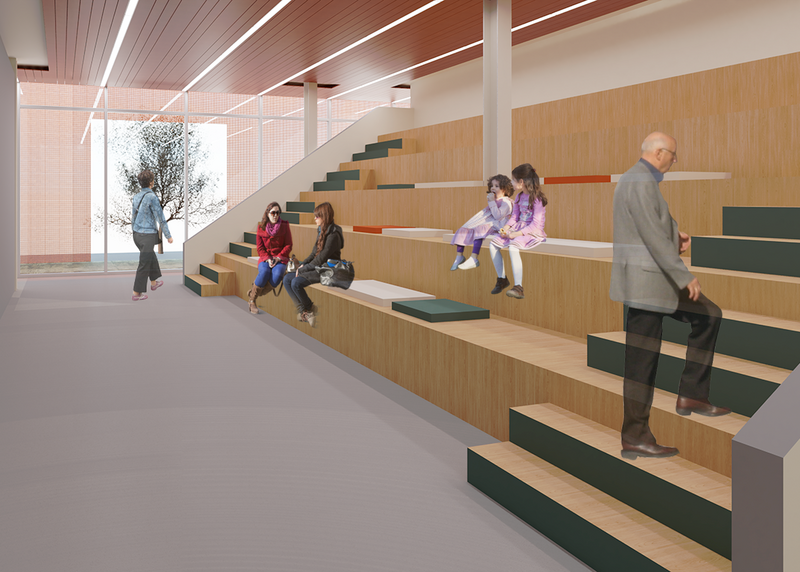
Theater | First Floor
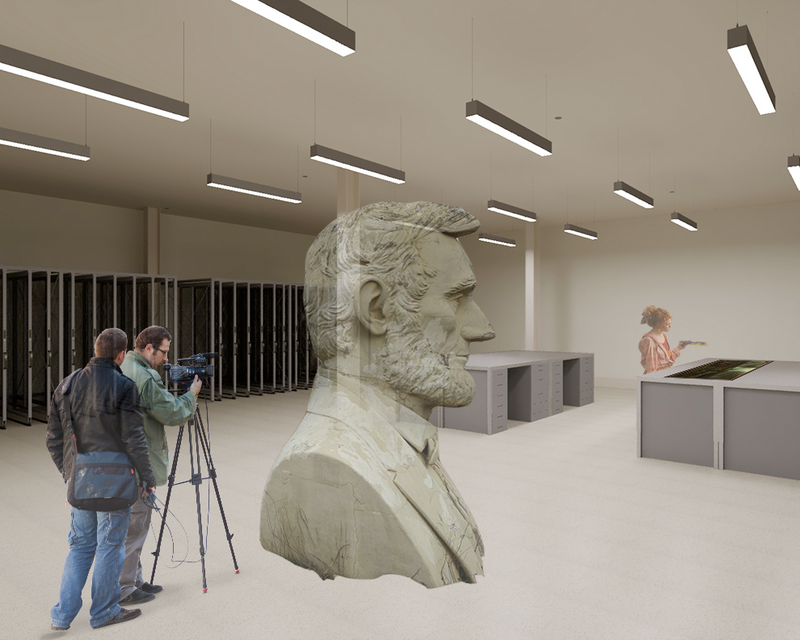
Restoration and Preservation Studio | Second Floor
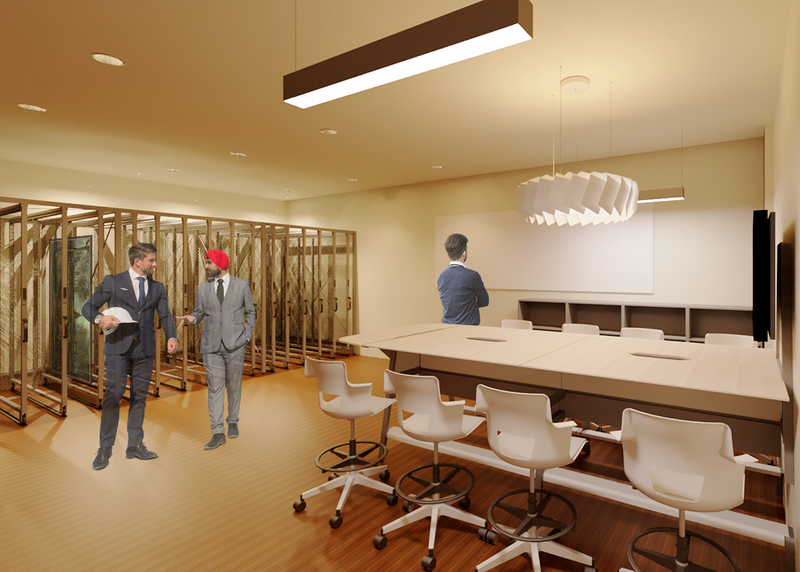
Research Library | Second Floor

Employee Lounge | Second Floor
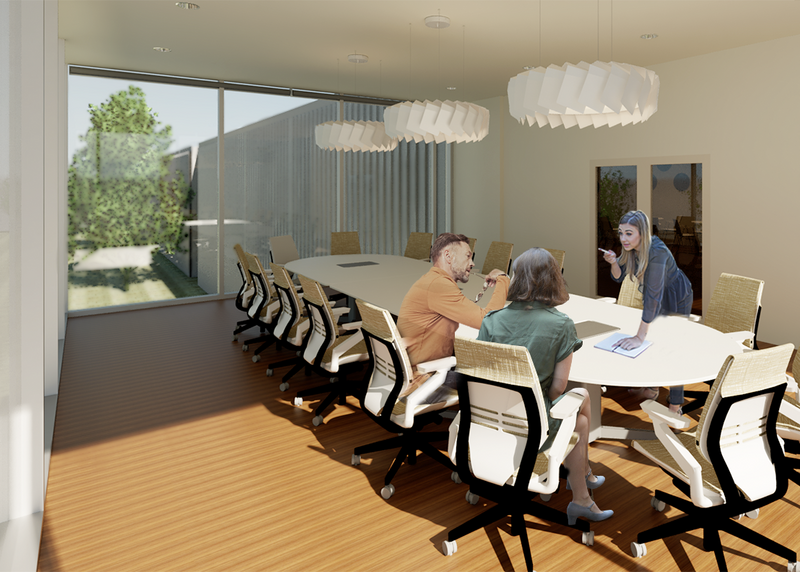
Conference Room | Second Floor
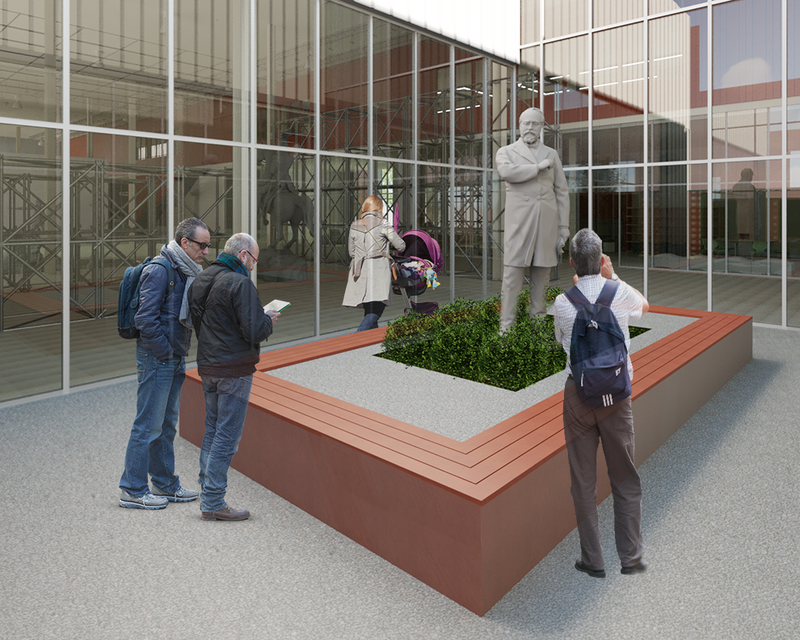
Exterior Courtyard
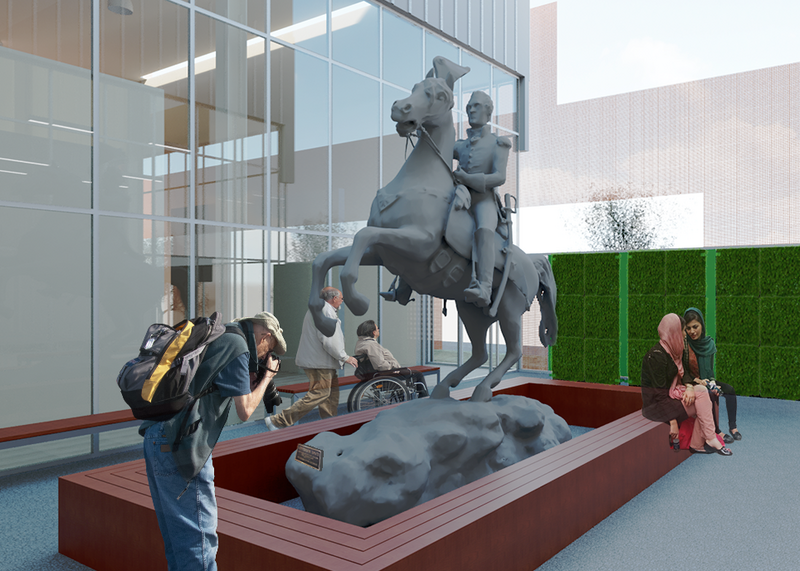
Exterior Courtyard
SITE ANALYSIS:
Ballet Memphis | Overton Square
Memphis, Tennessee
44,000 SQ FT
Ballet Memphis | Overton Square
Memphis, Tennessee
44,000 SQ FT
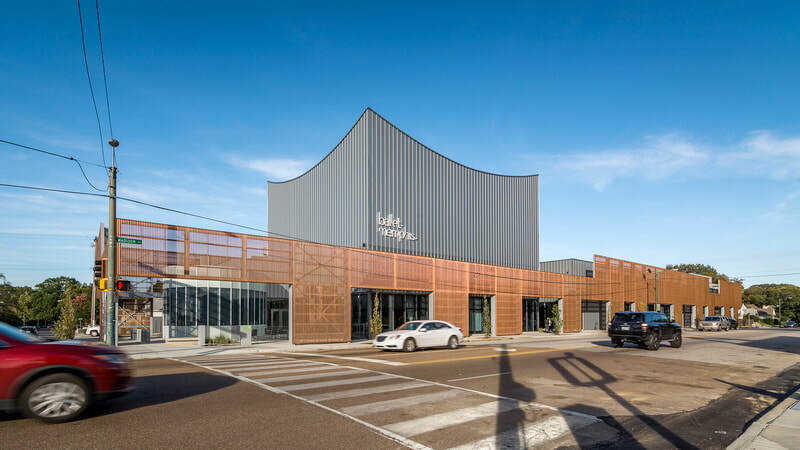
Existing Exterior Site perspective
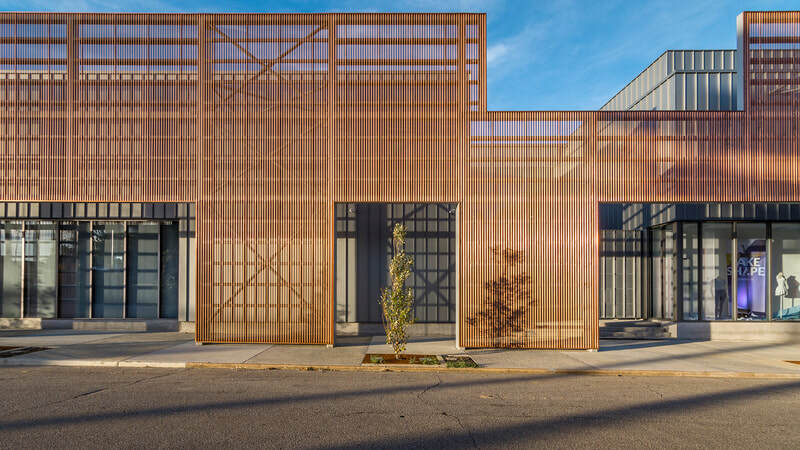
Existing facade detail
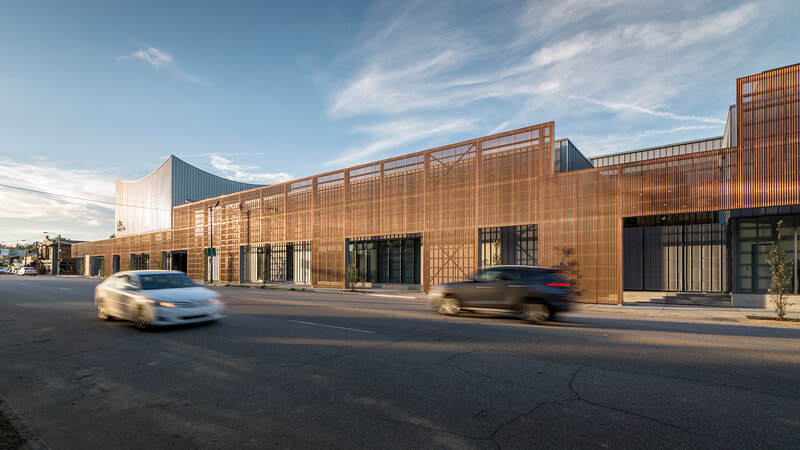
Existing Madison Avenue facade
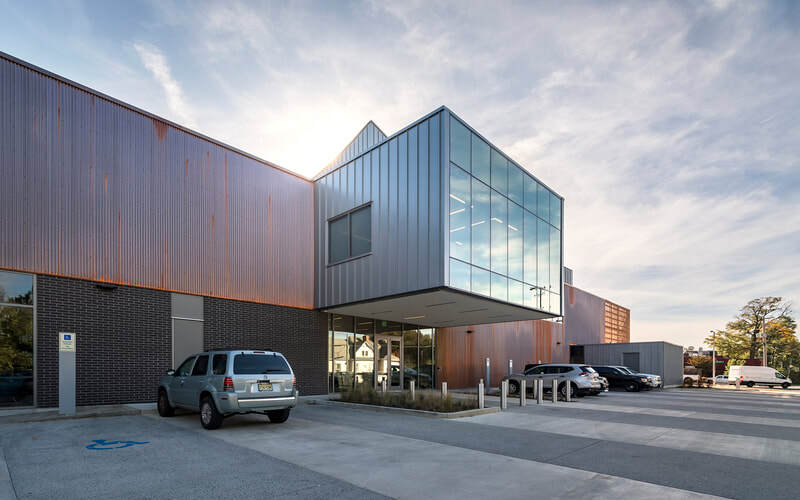
Existing parking lot perspective
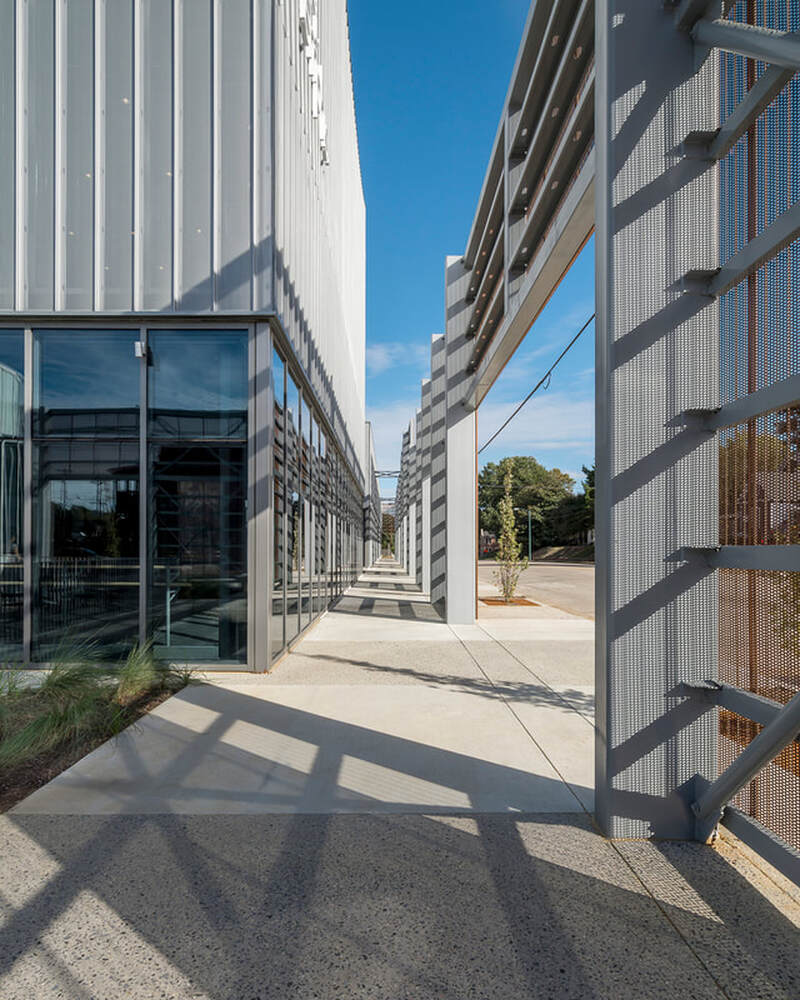
Existing Buffer Zone perspective
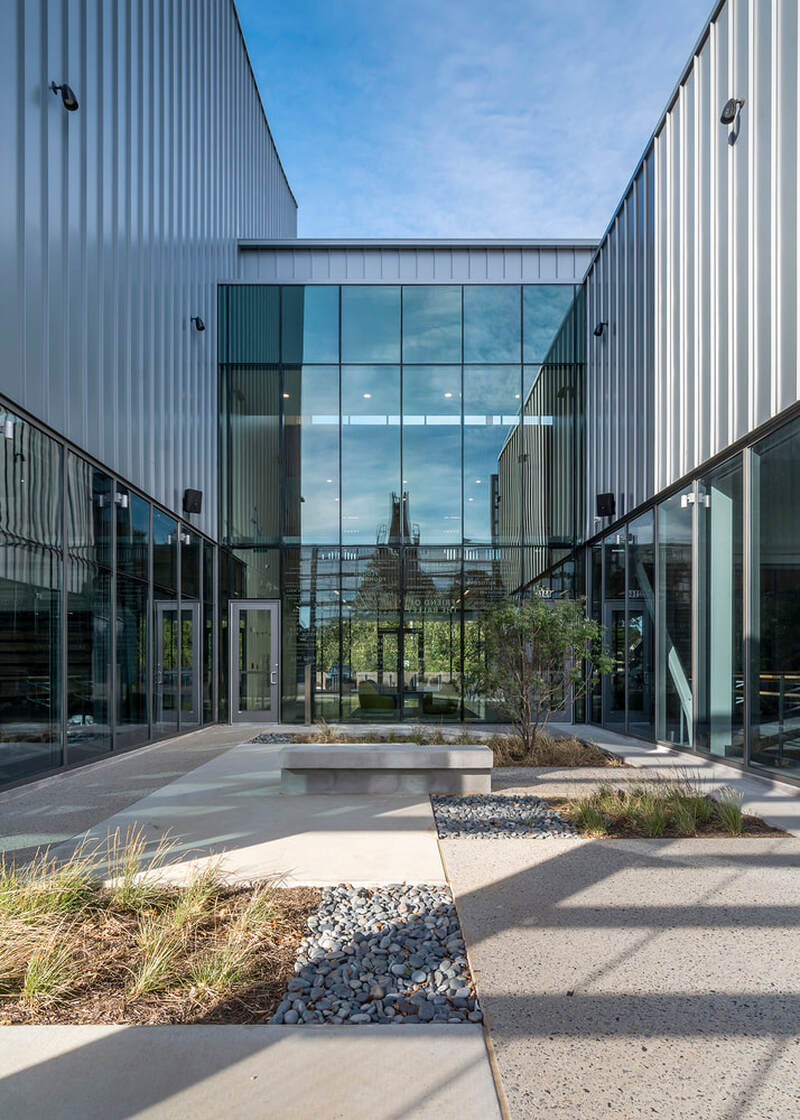
Existing Exterior courtyard
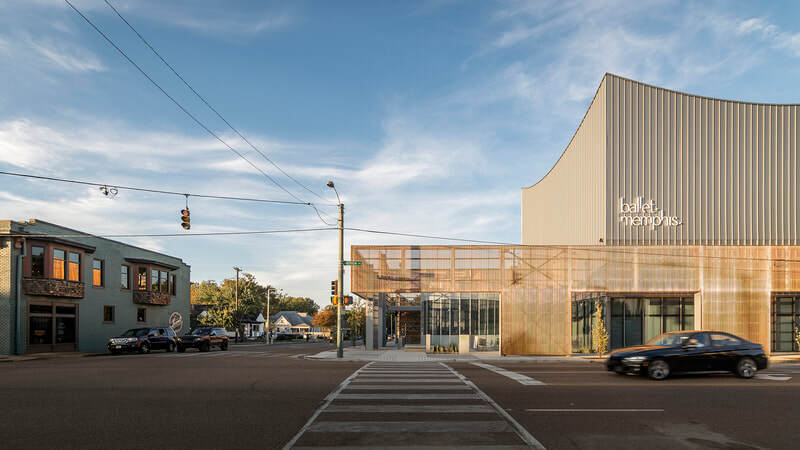
Existing Exterior perspective
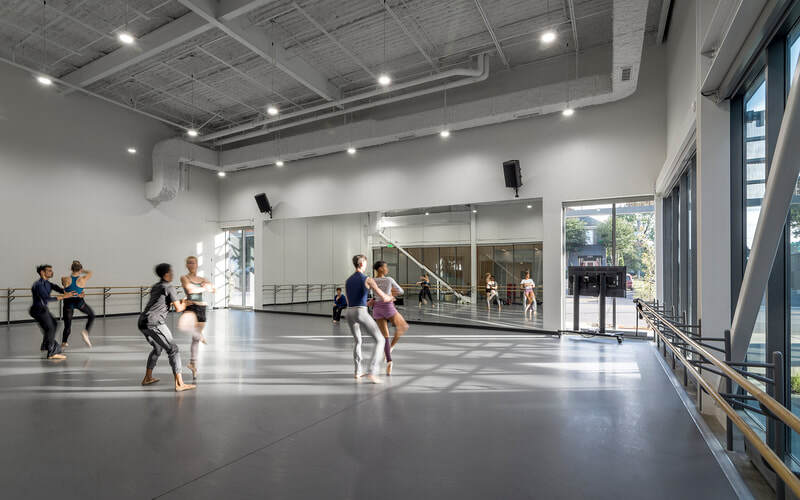
Existing Interior studio perspective
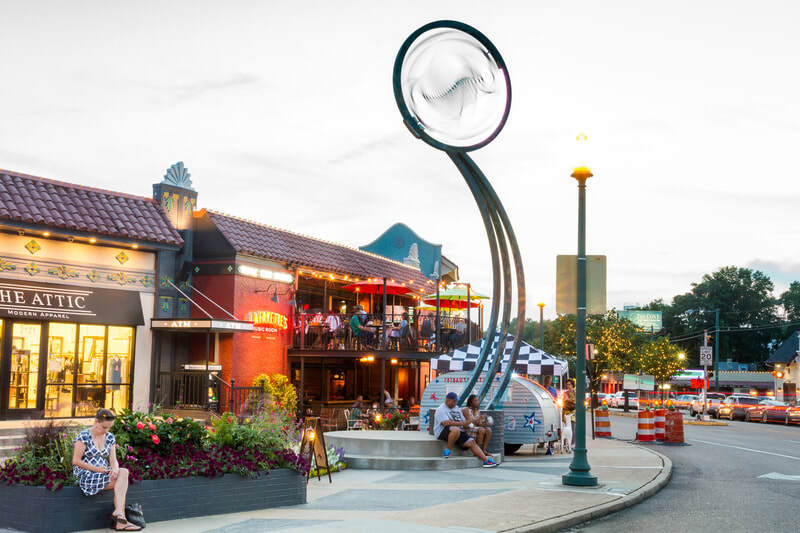
Madison Avenue and Cooper Street intersection perspective
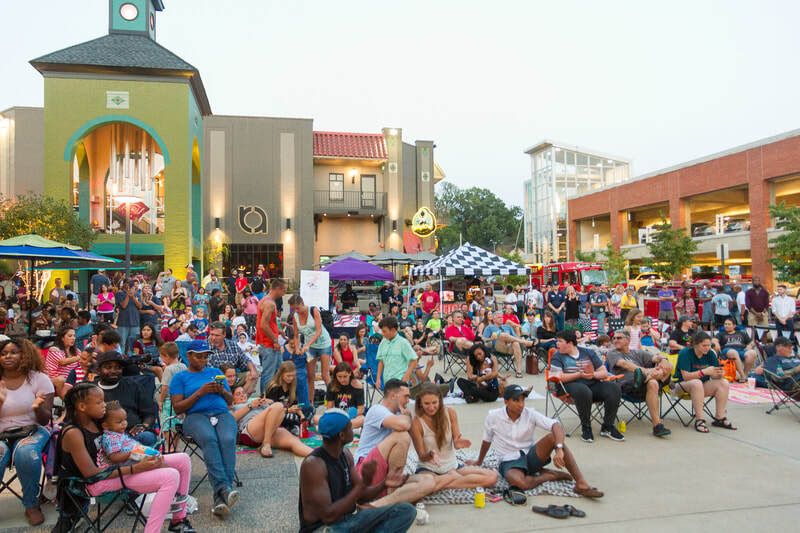
Neighborhood courtyard
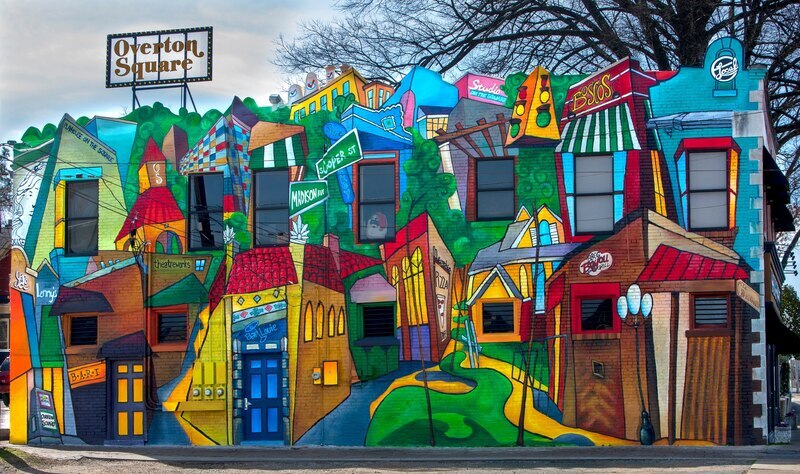
Neighborhood mural
Site Photos from Archimania
PROCESS WORK:
Presentation of my proposal:
Selection of my written thesis document:
